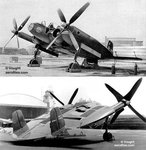- Thread starter
- #41
What about a He100 with a DB605D engine? That would probably qualify at Reno.
The only drawback is there is limited info on the airframe .
Reality is the FW190 is the best option . Airframes available and planes are flying . ME209 would also be an option , but how different are they from an ME109?

